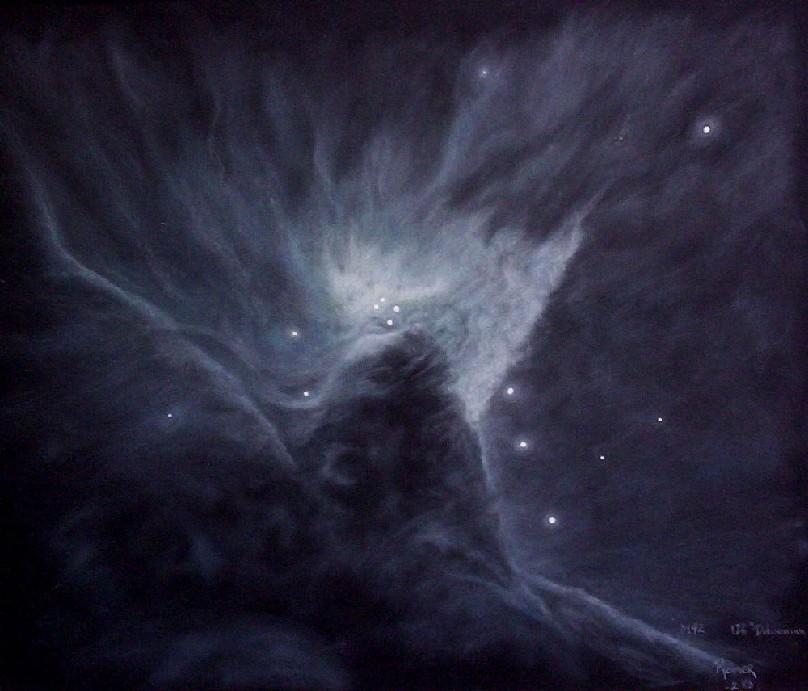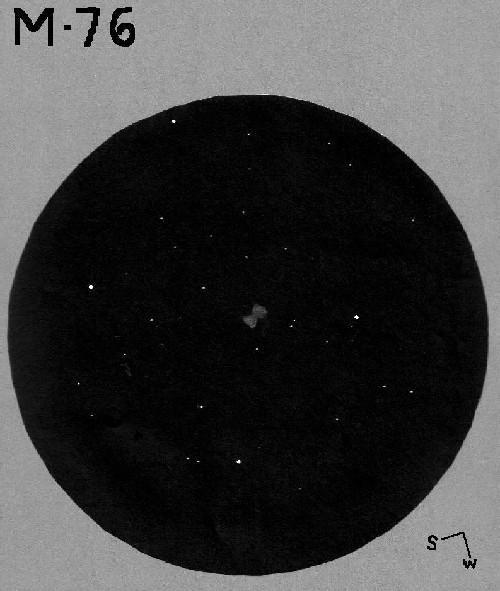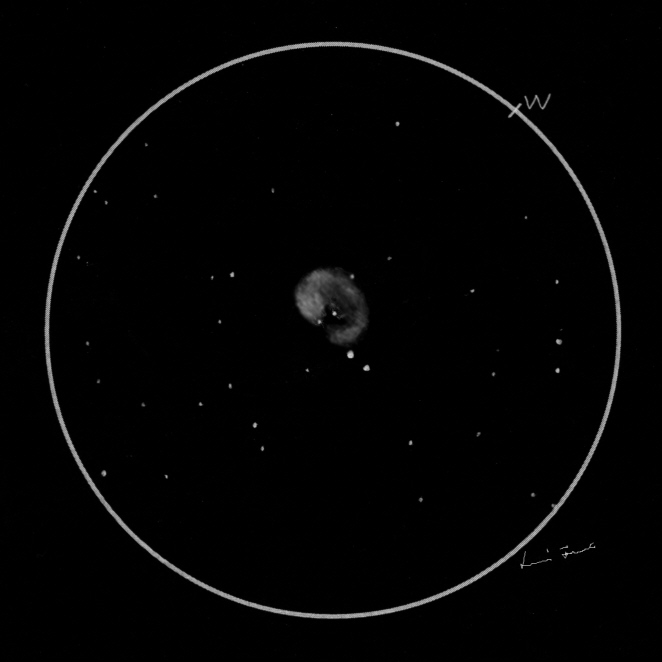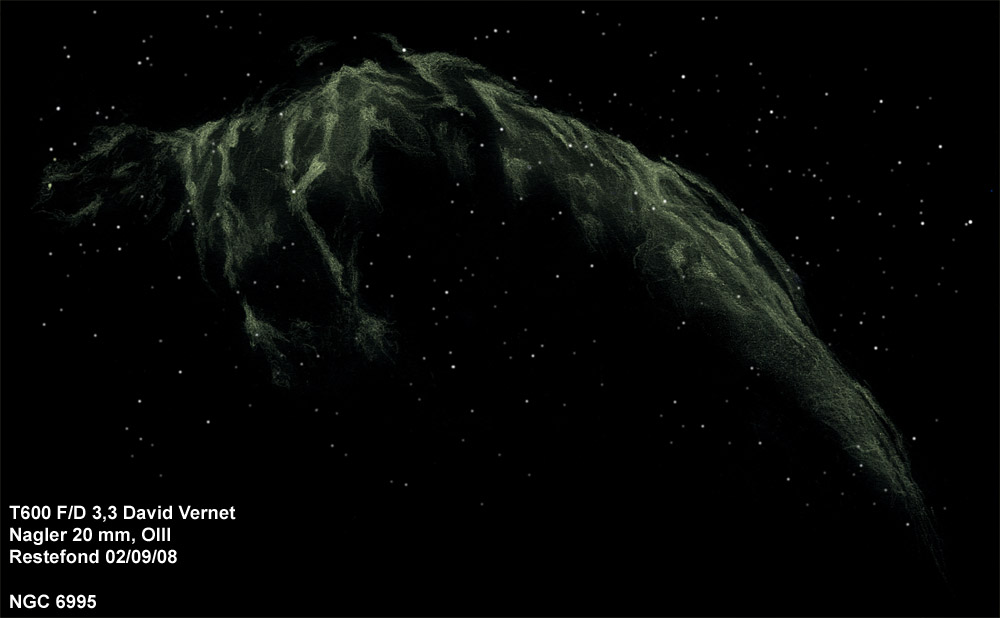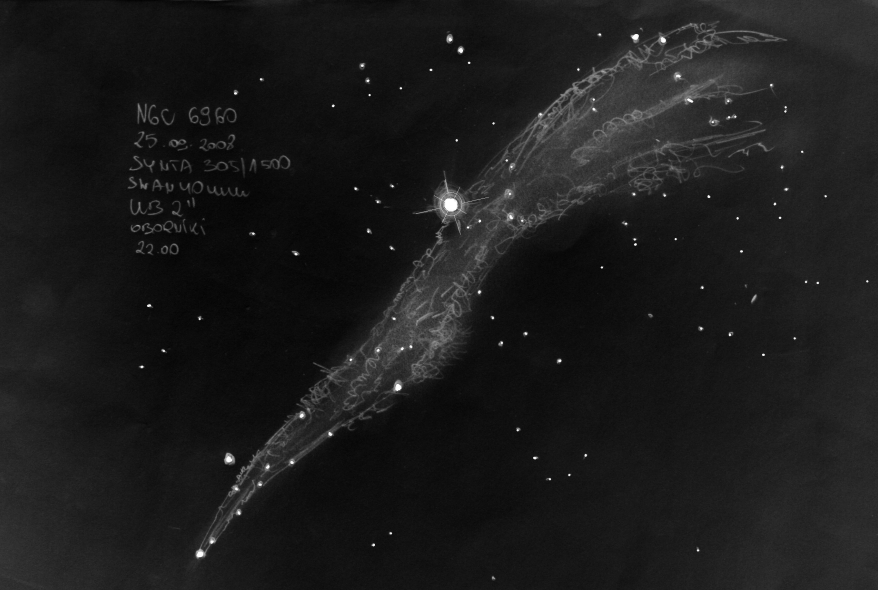
“The Finger of God”, western Veil complex
Sketch and Details by Robert Twarogal (Ignisdei)
Now I want to present a sketch, that was never publicated in internet. A western part of the Veil Complex, known as he Witch’s Broom Nebula, but I rather prefer other, rare used name, ( less formally ) of this extremely beautiful object: The Finger of God.
A veil nebula especially western part of it, is a marvellous conglomerate of fibres frayed matter.
This complex is a large object, so I usually use my lowest-power eyepiece : Swan 40mm witch nebular filter UB in Newton 305mm
I could spend hours in watching this unusual, extraordinary spectacle, which make me out of touch with reality.
Object Name : The Finger of God, NGC 6960 – Western part of Veil Nebula (Ignisdei)
Object Type: Nebulae/emission/reflection
Location: Poland/ Oborniki/suburbia
Date: 29.09.2008 y,
Equipment: Synta 305/1500, UB”, SWAN 2″ 40mm


